The striped orange ball is easily one of the world’s most recognizable pieces of sports equipment.
Choosing the right basketball is one of the most IMPORTANT DECISIONS to make when it comes to purchasing basketball equipment.
Your Guide
 Edis Hajlovac
Edis Hajlovac
A good ball can make your game experience much more ENJOYABLE and there are noticeable performance differences between good and bad basketballs, but we’re getting ahead of ourselves.
Every single pick-up game I’ve ever been a part of was preceded by a SORT OF RITUAL where every half-decent ball on the court was examined to select the game ball for the day.
From my research and playing experience, NBA Zi/O model is the best outdoor basketball ball.
-
Official size and weight: Size 7, 29.5
~Zi/O Tournament composite cover~Designed for indoor and outdoor play - Shipped inflated and game re
And the Molten GL7X is the best basketball for PLAYING Indoor basketball.
-
FIBA Approved
~Official 12 panel, 2-tone design~Indoor/Outdoor synthetic cover~Butyl Bladder~1 year , Ships defla
Everyone has slightly different criteria.
OF COURSE
And these subjective preferences vary from person to person regarding what is the best basketball.
There are, however, objective characteristics that make a basketball good or bad for a given purpose.
Today, we’ll cover everything you need to know when choosing your next basketball.
Regardless of the type of basketball you’re looking for, there are some concepts that are COMMON to all of them, and those concepts will be covered first and foremost to give you a general introduction to the subject.
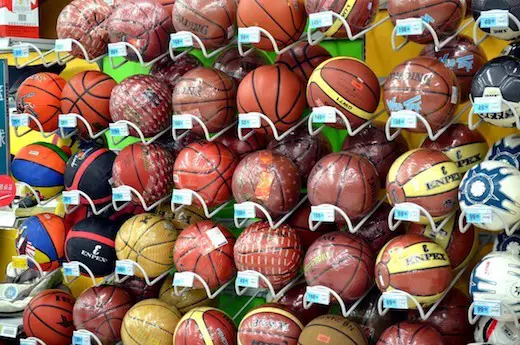
After the basics are covered, we will move on to more SPECIFIC TIPS related to the two main types of basketballs – indoor and outdoor.
More niche, special basketballs, will be mentioned in the text but we won’t go into as much detail as we will with the main stars of this guide.
We will dive deeper into the main things you need to consider when purchasing indoor and outdoor balls and explain some of the concepts that are More UNIQUE to each type.
To point you in the right direction, we will make a recommendation of what we think are the best indoor and outdoor basketballs on the market right now with a short review of our picks and an explanation of why we think so HIGHLY of them.
General Things To Consider Choosing Your Basketball
As simple as a basketball appears, you might be SURPRISED to see just how much complexity can go into the creation of one.
Before we dive into the more complex aspects of basketballs, let’s first cover the two of the most obvious differences between different basketballs:
1) The sizes
2) Materials
Many sports have balls of different sizes that are appropriate to different levels of competition; basketball is NO EXCEPTION to that.
Basketball Size
You’ll likely encounter basketball sizes ranging from size 4 to size 7.
Besides the obvious differences in the circumference of the ball, you’ll find that smaller balls also weigh less if you take them in your hands.
The reason for this is SIMPLE, smaller basketballs are meant to be used by younger, i.e., physically Weaker Players.
For example, 10-year-olds can’t honestly be expected to be able to PROPERLY HANDLE or shoot a size 7 basketball but they can be expected to handle and shoot a size 5 basketball, which is the size used for games at that age group.
This is important because it allows them to learn proper ball handling and shooting mechanics without having to SACRIFICE form, something that would be certain to happen if they were using a basketball that is too BIG or HEAVY, or both.
Using a ball smaller than the standard for your level of competition could hurt your development as a player, so you should stick to the ball size appropriate for your level of competition.
Size 4 is the smallest size of the basketball used in competition.
For many kids that start practicing basketball from an early age, this will be the first basketball size they encounter.
Officially, it is meant to be used by boys and girls ages 5 to 8. The circumference of size 4 basketballs is 25.5’’ (64.8 cm) and their weight is 14 oz (397 g).
1) Size 5 basketballs make the biggest jump in terms of circumference out of any size as they jump to a circumference of 27.5’’ (69.9 cm) and their weight is 17 oz (482 g). They are meant to be used by boys and girls ages 9 to 11.
2) Size 6 basketballs are an inch larger in circumference than the previous size at 28.5’’ (72.4 cm) and they weigh 20 oz (567 g).
This is the first size where the intended user groups are not as straightforward as they have been so far.
It is meant to be used by boys ages 12 and 13 after which they will MOVE on to size 7 basketballs.
However, it is the final basketball size meant to be used by girls aged 12+ in official competitions. Even professional female leagues use size 6 basketballs.
3) Finally, size 7 basketballs are a bit larger and heavier than size 6 basketballs at 29.5’’ (74.9 cm) and 22oz (623.7 g).
It is used by boys age 14+ in all official 5-on-5 competitions, including those at the highest levels such as the Olympics and the World Cup.
Your main guideline when choosing which basketball size to purchase should be the age of the person that’s going to be using it, be it you or your kids.
If your kid(s) are close to the age threshold for the next size, it might MAKE SENSE to get the larger size but it’s up to your judgment and common sense.
Whereas the size you should go for is dictated by age, the decision of what material your basketball should be made out of is a decision that should be dictated by the place you want to use it (indoor or outdoor) and the purpose.
Basketballs Materials
There are four main basketball materials –
- Rubber
- Synthetic (artificial) Leather
- Composite Leather
- Genuine Leather
Each of them has different PERFORMANCE and PROPERTIES that make them suitable for different environments.
There is no material that is going to outperform all others on all surfaces and some surfaces can even damage the materials that are not appropriate for them…
..SO selecting the right material for your needs will not only make your experience more enjoyable but it will also make your ball LAST Longer.
1) Rubber
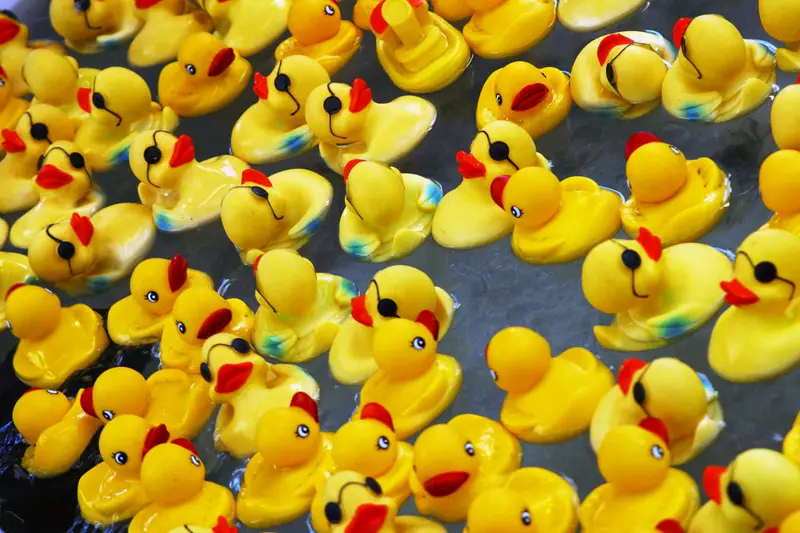
Let’s examine them one by one, starting from RUBBER.
Rubber is the cheapest material basketballs are made out of and rubber basketballs can WIDELY VARY in their quality.
Most are DOWNRIGHT AWFUL, but some can provide a good playing experience.
It’s easy to differentiate between the good and bad ones though…
..Just take them in your hands and Try Dribbling them once or TWICE and you’ll notice an immediate difference.
Once you’re more experienced, you’ll easily be able to evaluate them just by sight.
Given the high durability of rubber basketballs, they are best SUITED for outdoor use as they won’t get worn out by the asphalt or concrete surfaces nearly as fast as leather basketballs will.
There’s not much else they offer though, as their performance is worse than the basketballs made out of other materials.
2) Synthetic Leather
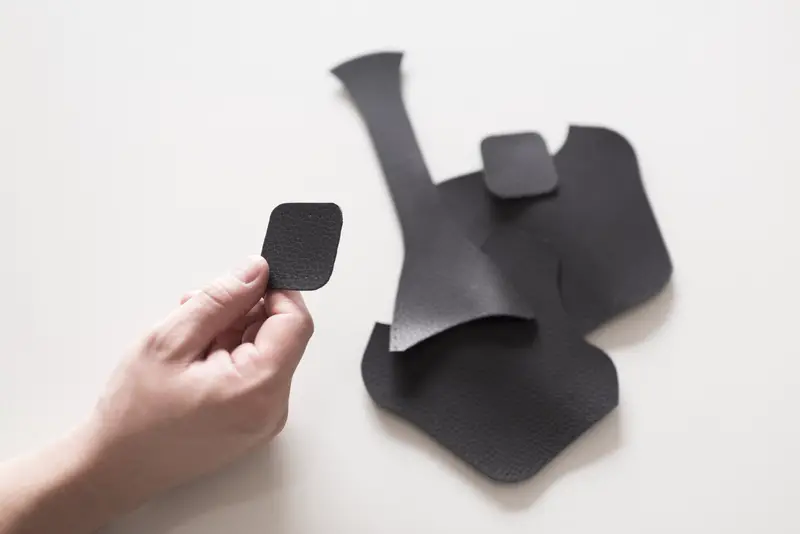
Synthetic leather, also called artificial leather, is a material that is used as a substitute for leather. It can be made in several different ways but it doesn’t contain any actual leather.
In terms of performance, it is a step up from rubber basketballs while maintaining their HIGH durability.
This mix of durability and performance puts them in a unique position suitable for indoor and outdoor play.
This is why most of the indoor-outdoor basketballs you’ll find on the market are made out of synthetic leather.
It is important to note that people often mix synthetic leather and composite leather as one and the same, but there is a difference between them.
3) Composite Leather
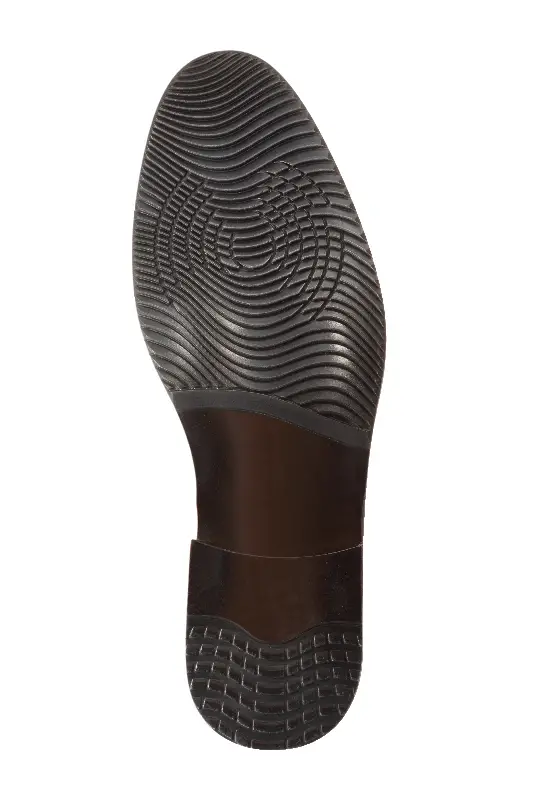
Composite leather is made out of a mix of leather components, such as shavings, and a filler such as polyurethane.
Given some leather in the mix, composite leather basketballs offer SUPERIOR performance compared to rubber and synthetic leather basketballs.
This performance comes at a price of reduced durability on outdoor surfaces, so they may NOT be suitable for OUTDOOR PLAY, but it varies from basketball to basketball.
A few composite leather basketballs are classified as indoor-outdoor but a MAJORITY are only for indoor play.
Many balls you’ll see at the professional level are made out of composite leather, so you probably can’t go wrong with them if you are interested in buying a quality indoor basketball.
4) Genuine Leather Basketballs

Finally, we have genuine leather basketballs. These basketballs are the most expensive ones that you can find and they OFFER the best possible indoor performance in return.
They don’t have high durability on rough surfaces so don’t even think about PLAYING with them outdoors if you want them to last.
Genuine leather basketballs are used in some leagues at the professional level, the NBA being a prime example of one such league.
BUT such basketballs are a BIT TOO MUCH for an average player and the bump in performance they bring over composite basketballs probably isn’t worth the cost.
You’ve noticed by now that we have separated basketballs into two major groups – indoor and outdoor.
The division is pretty self-explanatory and you may have already decided whether you want an indoor or an outdoor basketball or maybe you need more INFORMATION before doing so.
Whatever the case may be, maybe learning more about the unique considerations of each group will help you decide on the specific model you want to purchase or help point you to a type of basketball that is right for you.
Since we want to make this guide as comprehensive as possible, we’re going to take a better look at both types of basketballs and examine some unique properties that you should take into account when making YOUR DECISION.
How To Select An Outdoor Basketball
We already know that outdoor basketballs are differentiated by their durability and ability to STAND UP to Rough Playing Surfaces.
These surfaces will most often be concrete or asphalt, but they may also take the form of special synthetic playing surfaces such as those seen in FIBA 3×3 games.
Concrete or asphalt will eventually wear out any basketball regardless of the material, but the process will take a lot longer with rubber and synthetic leather balls.
When it comes to rubber basketballs, I’ve mentioned that there is a large difference between a bad one and a good one, and now I’ll give you a few pointers on HOW TO DIFFERENTIATE THEM.
The main DIFFERENCES are in the
- Feel/Weight
- The bounce
- The texture.
Rubber Basketball
Starting from the feel, when you pick up a bad rubber basketball, you’ll feel almost as if you’re holding a VERY HEAVY balloon because the ball is usually quite thin and much lighter than a basketball should feel.
A good rubber basketball will FEEL like an actual game ball in terms of having a weight and thickness that are very similar to those of higher-end basketballs.
In terms of bounce, a bad rubber basketball will feel very stiff when you’re dribbling it and it will produce a hollow sound.
Whereas a good rubber basketball will feel smooth to dribble and it won’t make a hollow sound when you’re dribbling it.
Bad basketballs will also bounce too much or too little, which will FEEL unnatural, while good rubber basketballs will have a much more natural bounce.
Finally, there is the texture. Most bad rubber basketball I’ve seen and used had a very rough texture and they were VERY DIFFICULT To Hold.
The dots or pebbles (bumps found on the surface of the basketball to increase the surface area and friction) are usually VERY rough in bad rubber basketballs, making the ball more slippery as there isn’t much good friction.
A good rubber basketball’s pebbles will feel smoother and it shouldn’t slip from your hand when you’re shooting it because its bumps will provide much better friction.
My advice on this is simple:
Avoid bad rubber basketballs like the plague; They are not worth the FUSTRATION no matter how cheap they are.
Good rubber basketballs can be very enjoyable to play with outside and I really like the FEEL OF PLAYING with the rubber basketball I bought a few years ago.
Synthetic Leather Basketball
Other outdoor basketballs are made out of synthetic leather, a material that offers the high durability of rubber but with IMPROVED performance.
Let’s see how the two materials compare overall.
1) The first comparison point is the BOUNCE.
We’ve already mentioned how rubber basketballs can greatly vary in terms of their bounce depending on their quality and how their bounce can feel very unnatural.
This makes them inferior in terms of bounce when COMPARED with synthetic leather basketballs.
Synthetic leather basketballs have a much more natural and consistent bounce between different basketballs.
Overall, rubber is a bouncier material than synthetic leather but this extra bounce ends up hurting them.
The reason for this is NOT ONLY the already mentioned differences in feel and performance when dribbling but also the ways in which the two materials interact with rims and backboards.
The extra bounciness that rubber has means that the way a rubber ball rebounds or interacts with the backboard on layups or BANK SHOTS will be different than the rebound or backboard interactions of a synthetic leather basketball.
2) Rebounds from rubber basketballs are going to be LONGER and/or HIGHER, while they will also bounce off of the backboard with more FORCE.
Meanwhile, a synthetic leather basketball would ABSORB some of the IMPACT forces that would result in more natural (shorter) rebounds and interactions.
Granted, rim type and backboard materials will play a part in determining the exact rebound length/heights and backboard bounce, respectively, but this is how the two basketball materials interact with the same rim and backboard.
Selecting The Right Basketball Grip For You
The grip is the second point of comparison and the situation here is much more COMPLEX than when it comes to bounce.
Both (good) rubber and synthetic leather basketballs will offer a good grip, and which is going to be better depends on the two specific balls you are comparing.
However, most rubber basketballs can’t be qualified as good, so an average rubber basketball is going to offer a noticeably worse grip than an average synthetic leather ball.
With that being said, better rubber balls can give synthetic leather balls a good run for their money when it comes to grip.
This is the case when your hands are DRY, as well as when your hands start becoming SWEATY.
Rubber basketballs can also feel rough on your hands, so I have to give synthetic leather balls the EDGE in this category.
What are the things you should consider when playing outdoors?
One very important thing to consider when playing outside is DIRT since it can affect the grip and overall performance of your basketball.
Getting your ball DIRTY when playing outside is unavoidable and it is something you’ll have to DEAL with eventually.
Dirt can turn even balls with excellent grip into slippery MESSES, while balls that were borderline unplayable will cross that border so far that they can make you lose the will to play anymore for the day.
The better the grip of your ball was, to begin with, the more space there is for the grip to get worse, and the more you’ll notice it.
Given how both rubber and synthetic leather are primarily materials FOR outdoor basketballs, this effect isn’t as noticeable as it would be with composite or real leather balls.
Still, it will interfere and dirt seems to ruin the grip of an average rubber ball faster than the grip of an average synthetic leather ball.
Exactly how bad things get will depend on the specific quality of each individual basketball.
Fortunately, Rubber and Synthetic leather balls are very easy to clean, so you can easily restore the grip on your ball.
How do I clean rubber and synthetic leather balls?
You need a
- Cloth,
- A soapy water mixture, and
- Maybe an old toothbrush.
If the ball is REALLY DIRTY, it might be a good idea to let it soak in the mixture first for 30ish minutes.
If there is some writing or graphics on your basketball, they might fade or get scratched as you use the ball more and more.
This is PERFECTLY normal and doesn’t mean the ball is damaged.
You can use a sharpie and FIX FADING or SCRATCHES if it bothers you.
The durability of both materials is more than adequate for playing outside and you won’t have to worry about the playing surface damaging the ball to the point where its PERFORMANCE will be affected.
Basketball Court Surface
Speaking of playing surfaces, you’re most likely going to be playing on concrete (usually the roughest surface) or asphalt (usually much smoother).
You may have a court near you with a synthetic playing surface if you are LUCKY.
Those courts are an absolute JOY to Play on and the playing surface is usually made out of interconnected tiles that look like this, and an example of such a court looks like this.
This surface is not only great for your ball but it also reduces the impact on your joints.
What’s the overall verdict between the two materials?
It’s unavoidable to say that, all things considered, synthetic leather basketballs are SUPERIOR to rubber ones in an overwhelming majority of cases and you should go for a synthetic leather one if you plan on playing outside.
If budget is a major concern and if you’re able to find a really good one, then a rubber basketball can certainly be a viable choice but that’s not going to be a common scenario because most rubber basketballs are just downright awful.
Recommendation For You – Spalding NBA Zi/o
I’ve mentioned before that some composite basketballs are classified as indoor-outdoor.
The ball I’m going to recommend for this category is an example of JUST such a ball. The ball in question is theSpalding NBA Zi/O.
I’ve spent almost all of the previous segment talking about rubber and synthetic leather basketballs, and then I recommend a ball made from a different material.
This might feel like I cheated a bit, but there’s no DENYING that the NBA Zi/O is a damn good basketball for outdoor play.
The fact that the surface of the ball is made out of composite leather may make you doubt its VIABILITY as an outdoor basketball, especially when you read the segment on indoor balls, but as with most things, nothing is set in stone.
There are different ways of making composite leather, including a mixture that is better suited to outside conditions.
This, combined with other design choices that I’ll get to SOON, leads to features that make this ball one of the best outdoor-ready models on the market.
An outdoor basketball lives or dies on two things –
- Grip and
- Durability
You’ll be glad to hear that the grip of this ball is very good because the pebbles are quite tight and even the graphics are dotted instead of SMOOTH like on some cheaper balls.
This ensures a good grip over the ball without slippery surfaces. Tightly packed pebbles also help MAINTAIN the GRIP when your hands are wet by helping wick away the moisture from your hands.
The only downside to this is that dirt becomes harder to completely clean out since it TENDS to get in between the pebbles, so it will take more time to clean the basketball than you otherwise would.
The material is definitely made to be TOUGHER than most other composite leather basketballs so it can withstand the impact of rougher playing surfaces.
The pebbling will wear out over time, just like with any other ball, but it will maintain the grip level for quite a while before SEROIULY Degrading.
The basketball simply does a lot of things well and doesn’t need to RESORT to gimmicks to sell itself.
The DESIGN is fairly traditional, with eight panels that are separated by channels. The panel edges are well made and the grip won’t suffer because of them.
Almost everyone that picked up this basketball is happy with what they are getting out of it and it is quite affordable.
Spalding is a company that knows what it’s doing when it comes to making basketballs and they have shown it ONCE again with the NBA Zi/O model.
- Official NBA size and weight: Size 7, 29.5 inches
- Zi/O Tournament composite cover
- Design may vary
- Shipped inflated and game ready
- Designed for indoor and outdoor play
- Indoor/outdoor composite leather basketball
- Deep channel design for better dribble control
- Foam backing under the full ball pebbling for precise ball handling
- Official NBA size and weight
- Official play size of 29.5 inc
How To Select An Indoor Basketball
Indoor basketballs are much FINER and of higher quality than outdoor basketball.
They offer unmatched performance when used on smooth indoor surfaces that they are designed for but using them on rough outdoor surfaces would be CRIMINAL.
Before we MOVE ON, we need to set the record straight on something.
While some artificial leather or even rubber balls are classified as indoor, we will only consider composite and genuine leather balls as “indoor” for this segment.
Unlike with outdoor basketballs, where there is a HUGE difference in quality between the best and the worst balls, indoor basketballs can usually be counted on to be quality products where the gap in quality and performance is much smaller.
Types Of Court Surface
There can still be counterfeits and cheap IMITATIONS out there that are trying to PASS themselves off as real composite or genuine leather but they are usually easy to spot and aren’t that common to begin with, in my experience.
So, what kind of surfaces are they designed for?
Virtually any SMOOTH indoor surface that is regularly cleaned.
Examples include the iconic hardwood surface like the one you see in professional basketball games and various types of synthetic surfaces.
That part about the surface being cleaned regularly is mentioned for a reason which we’ll get to a little bit later.
Before that, let’s do a head-to-head COMPARISON of the materials just like we did with outdoor basketballs.
Inflate Basketball Psi
First up is BOUNCE.
You’ll find that the two materials are pretty EVENLY matched when it comes to their
- Interactions with the playing surface
- The rim, and
- The backboard
Dribbling both composite and genuine leather balls will feel NATURAL and the BOUNCE can only greatly differ with different levels of inflation.
This is probably a GOOD TIME to talk about how much you should inflate your basketball.
Some recommend the pressure inside the ball to be between 7 and 9 PSI…
..while others recommend a narrower range at 7.5 to 8.5 PSI.
Granted, not everyone is going to have access to a PUMP with a pressure gauge. However, you could access to decent pump with a pressure gauge under $20.
There are other alternative methods to determine if your ball is properly inflated. Fortunately, there’s a TRICK that can help you in this situation.
There are many versions of this trick, and everyone will have their OWN, slightly different version.
I’ll tell you the VERSION that works for me.
Try it out and see if it works for you as well or adjust it a bit to your OWN TASTE if you aren’t satisfied.
After inflating the ball, stand up and hold the ball in front of your shoulder so that the center of the ball is in line with the shoulder joint.
It doesn’t have to be EXACT, use this as a GUIDELINE and get it as close as possible.
Next, let the ball free fall and BOUNCE OFF of the floor – you should be doing this on the surface where you’re going to be playing for the most accurate results.
When the ball bounces, try to catch it at the HIGHEST POINT of the Initial Bounce.
If the ball has bounced to the point where the center of the ball is approximately in line with the top of your hip, then it is probably well-inflated and ready for play.
If it bounces noticeably LOWER, inflate it a bit more and deflate it a bit if it bounces higher, then repeats the process.
Everyone’s body proportions are a bit different so this exact version might not work for you but it gives you a GOOD starting point.
But why is it so important for the ball to not be over or under-inflated?
I think the answer is fairly obvious in the case of under-inflated balls, you don’t want to struggle EVERY TIME you want to dribble the ball.
Overinflated balls can feel easier to dribble because they BOUNCE HIGHER but that brings about its own set of problems.
A ball that bounces too much can be difficult or even impossible to properly control, something that is especially noticeable when a few dribble moves are CHAINED TOGETHER.
An overinflated ball will also bounce harder off of the backboard or the rim which will make layups and bank shots more difficult.
An underinflated ball will do the opposite and neither is good since it will make dribbling harder and cause shots that are supposed to go in to miss.
In short, you want to keep the inflation level of your basketball in the SWEET ZONE where the ball has enough bounce to be “fluid” when dribbling it without being too hard to control or put in the basket.
Grip And Texture
Getting back to our comparison, the bounce is pretty EVEN.
What about the grip and texture?
Both materials feel SMOOTH and offer great grip, even with slippery hands. Most people that take a composite or genuine leather ball in their hands for the first time comment on the grip.
One more important note regarding the inflation level of your composite or genuine leather basketball is that they are always SOLD already inflated.
There’s a good reason for this as deep creases would be VISIBLE on the ball’s surface if it was shipped deflated and later inflated.
The creases can still appear if you let the ball deflate to dangerously low levels…
..so make sure to periodically check how inflated it is and store it away from direct SUNLIGHT and places, where the temperature is very different from room temperature as that, can lead to BIG deflation over time.
With genuine leather balls, storing them in direct sunlight can cause the surface to dry out which will cause CRACKS to start appearing and the overall quality of the ball to severely degrade.
Getting back on the topic of grip, both materials feel as if they stick to your hand in a good way, i.e. they say in your hand when you want them to and easily leave it when you want to shoot, dribble, or pass the ball.
Neither of them will stick to your hand when you don’t want it TO.
While both materials offer an outstanding grip that you won’t find wanting, a slight edge will have to go to the genuine leather basketballs because they have a slightly superior grip when the hands are wet in my experience.
In terms of durability, it is extremely important to NEVER use indoor basketballs for outdoor play on concrete or asphalt, at least if you want them to last.
Rough surfaces will QUICKLY RUIN the cover layer of the ball and severely degrade the ball’s overall performance.
Genuine leather balls will be hit harder than composite ones but both materials will be quickly ruined and it is simply not worth it.
If you really need to play outside, invest in a cheap rubber or synthetic leather basketball.
Caring For Your Basketball
When used for their intended purpose of playing on smooth and clean indoor surfaces, you don’t even need to consider which material is more durable since both will last for a very LONG TIME.
If you’ll recall the start of this segment, I mentioned the importance of a CLEAN playing surface and it’s time to dive a bit deeper into that statement.
- Both composite and genuine leather are great at picking up dust and other tiny dirt particles which is horrible for their performance.
- Dust and other tiny dirt particles will stick to the surface of the basketball and worsen the GRIP.
- If enough dirt accumulates on the surface of the ball, it will become so slippery that it will be nearimpossible to properly PLAY with it.
This is another reason why it’s a horrible IDEA to use these indoor balls on outdoor courts.
Besides having rough surfaces that will damage the ball, those courts are covered in dust and dirt.
Just look at your hands after about an hour of playing on an outdoor court with any BALL…
Since there is so much dust and dirt on outdoor courts, it will take a very SHORT amount of time for the surface of your ball to become so slippery that you can’t play with it anymore without cleaning it.
Cleaning can be difficult in its own right since dirt will also get LODGED between the pebbles.
Even when you use the indoor balls only for their intended purpose, they can still pick up dust and tiny dirt particles from the hardwood.
It might take a LONG TIME for you to start noticing the effect and you might need to clean the ball sooner or later.
So, how do you clean composite and genuine leather basketballs should the need ever arise?
Since these materials are more sensitive than rubber or synthetic leather, I don’t recommend using anything other than a soft cloth rag when cleaning them.
With composite leather balls, you can prepare a mixture of
- Mild SOAP and WATER,
- Dip a cloth rag in it, and
- Use the cloth to clean the basketball.
Use a different wet cloth to wash off the soap and a towel or a third cloth to dry the ball.
You shouldn’t ever directly put the ball in or under the WATER. With genuine leather, you should use specialized leather cleaning products instead of a soap mixture for the CLEANING process.
You can first wipe the ball with a wet cloth to remove the top layer of dust and apply the leather cleaning product later.
Just make sure to follow the instructions on the leather cleaning product carefully and DON’T use a leather softener instead of a cleaner.
Also, make sure that you never use a hairdryer or something similar to dry the ball faster as the heat can DRY OUT the basketball and cause cracks to appear.
One UNIQUE thing about genuine leather and some composite balls is that they will need to be broken in before they are truly ready for play.
Such balls will feel SLIPPERY and stiff right out of the box, hence the need to break them in.
This is similar to getting a pair of new shoes. They will feel stiff until you’ve walked around in them a bit and they become more comfortable to wear.
As for how exactly you should break in a basketball, you can do many different things, DEPENDING ON WHO YOU ASK.
Breaking in a ball can be defined as wearing it out just a bit until it reaches OPTIMAL performance.
Many manufacturers recommend just dribbling it as hard as possible and playing with them so that the impact forces, combined with the natural oils of your skin and your sweat, do the work over a few weeks.
Some old-school coaches have a different and a bit more extreme approach.
I’ve heard STORIES of coaches instructing their players to kick new balls from a distance against a wall to break them in faster.
Obviously, do this at your own RISK and don’t try it against a rough wall that can damage your brand-new ball before you’ve even had the chance to properly play with it.
The bottom line is that both materials will provide EXCELLENT performance and your choice between a composite leather and genuine leather basketball will most likely come down to personal preference and budget.
Rest assured that you can’t go wrong with either option.
Recommendation For You – Molten GL7X
If you’ve watched any of FIBA’s major tournaments recently, such as the basketball World Cup in China last year or any of the recent basketball tournaments in the Olympics…
..then you’ve seen the OFFICIAL game ball – the Molten GL7X which is made out of top-grain leather.
This ball is my recommended indoor basketball and it is one of the easiest choices I’ve ever made when it comes to product recommendations of any kind.
I’ve spent a lot of time playing with this basketball and it is probably the best one I’ve ever used.
Molten is the official supplier of basketballs for all FIBA competitions and most of their recent models, including the GL7X, have some INTERESTING and unique design features that separate them from the competition.
The most obvious and noticeable is Molten’s unique and patented 12-panel layout.
This layout looks NICE and it has two main practical purposes.
More panels mean more channels and many players like to line up their fingers with the channels when shooting to get a better grip on the ball and better SPIN.
More channels on the ball increase the chance of quickly lining your fingers up with a channel in a game situation.
The other practical use of this design is the ball’s color scheme that you can see in the picture.
This color scheme makes it very EASY to track the spin of the ball when you release it. This can give you valuable information on how to improve your shooting.
The pebbling on this ball is also QUITE Interesting.
Most basketballs feature pebbling with a spherical top but the GL7X goes for pebbling with a flat top to INCREASE the contact area and improve grip.
The pebbling pattern is also symmetric instead of random on most basketballs.
This design choice was made in order to increase CONSISTENCY. This might take some getting used to but it will start feeling NATURAL very soon.
Overall, the grip and the performance of the ball are absolutely superb and the fact that this ball is used in the biggest basketball competitions in the world is a great TESTAMENT to its quality.
The durability is outstanding if you use the ball for indoor play but under no circumstances should you ever try playing with it on outdoor courts because rough surfaces will ruin the surface of the ball before you know it…
…not to mention that it picks up dirt and dust very EASILY.
The ball is relatively affordable given the level of quality and will probably satisfy all your needs if you’re looking for a great indoor basketball.
Frequently Asked Questions:
What basketball is used in the NBA?
The NBA uses Spalding’s NBA Official Game Ball. It is a full-grain leather model that has been in use since 1983.
The League tried SWITCHING to a composite model in the summer of 2006 when they announced the New Ball that was going to replace the old leather game ball.
This experiment was a disaster from day one as many of the League’s stars PUBLICLY trashed the New Ball.
The brief era of the New Ball was brought to an end on January 1st, 2007 when the NBA switched back to a leather ball that is still in use today.
Which is better, Spalding or Wilson?
Questions like this will most often come down to personal preference and the things that YOU look for in a basketball.
Both brands have good balls as evidenced by the leagues that use them. Wilson makes the balls for the NCAA and Spalding supplies the NBA and the EuroLeague.
For the average user, however, I’d say that Spalding has the edge when it comes to indoor balls and Wilson has the edge with outdoor balls.
Which is better, Molten or Spalding?
This one is even tougher than the previous question as both brands are BELOVED by both professionals and amateurs.
Top-tier balls of both brands are excellent products and they are very good competition to each other.
You’ll have to try both and decide for yourself.
I’ve had the opportunity to play with the top Molten models and I was IMPRESSED.
I haven’t had the chance to play with the NBA Official Game Ball (although I’ve heard great things from people I know who played with it) but I did play with Spalding’s official EuroLeague ball.
Personally, I prefer Molten but I really recommend you try both because these brands deserve it.
What is the most expensive basketball?
I have to exclude memorabilia items such as signed balls or those from big games from consideration because they are not meant for PLAYING and their price is highly subjective.
The most expensive regular basketball is Spalding’s NBA Official Game Ball which costs $169.99 on Spalding’s website.
How big is an NBA basketball?
An NBA ball is a size 7 with a circumference of 29.5’’ or 75 cm.
You can’t PLAY basketball without a hoop and a ball, and I hope this guide has answered all the questions you may have had about the latter and gave you a good idea of the type of basketball you want to get for yourself or someone you know.
I’ve tried to provide a comprehensive list of general information directly related to the topic while also covering topics that aren’t DIRECTLY connected to selecting a basketball but are still very useful and relevant, such as
- Storage,
- Inflation levels, and
- Cleaning.
If things work out the way they should, a basketball should be one of the most long-lived pieces of basketball equipment you’ll ever buy, second only to your hoop.
That’s why it’s important to make an informed purchasing decision and select a ball that is suitable for your NEEDS and intended uses.
One final piece of advice I’ll leave you with is that you should always try to feel the basketball in your hands if at all possible so that you can find something that you’ll be absolutely satisfied with.
With that being said, this guide is at its end.
Thank you for reading this far and I hope you’ve gained some USEFUL INFORMATION from it.
Do you already know which basketball you’re going to get?
Have you already bought one and if so, how did it work out for you? Let us know in the comments below and stay tuned for our next guide.
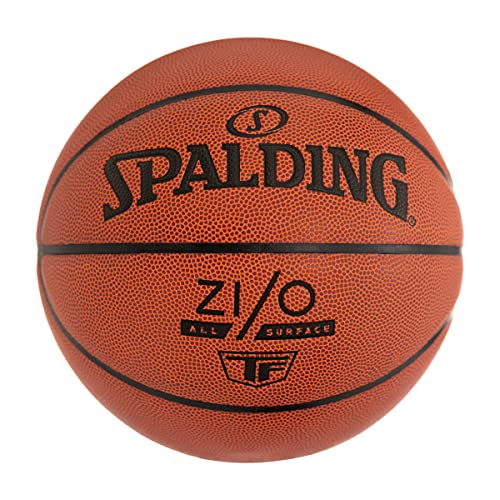





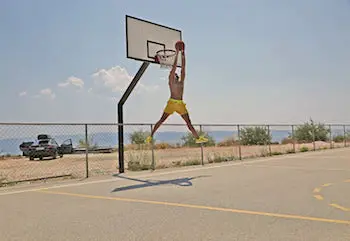
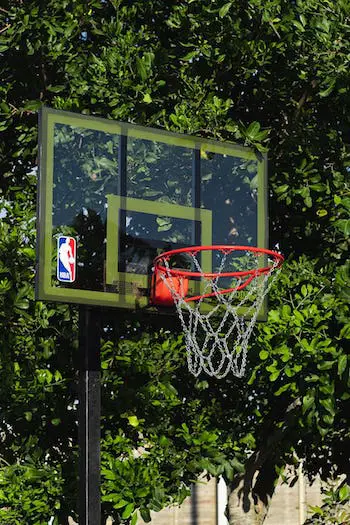
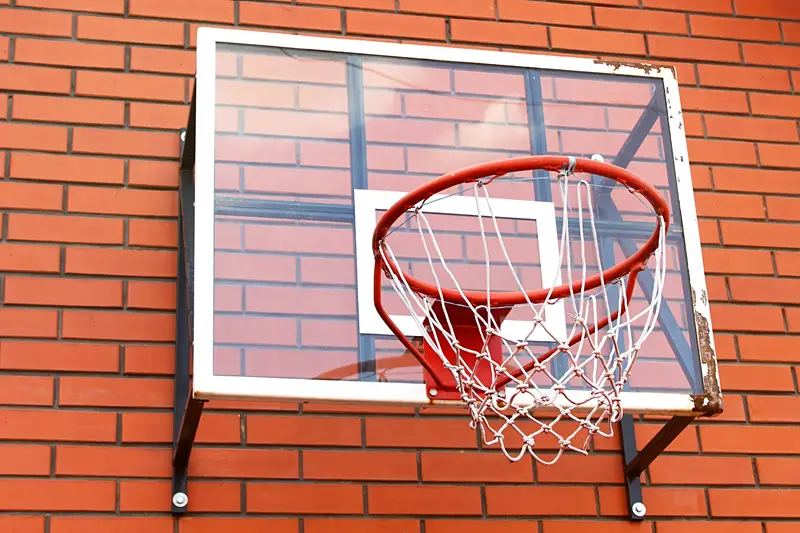
Very good article!
I needed to thank you for this wonderful read!!
I definitely loved every little bit of it. I have got you book marked to
look at new stuff you post…